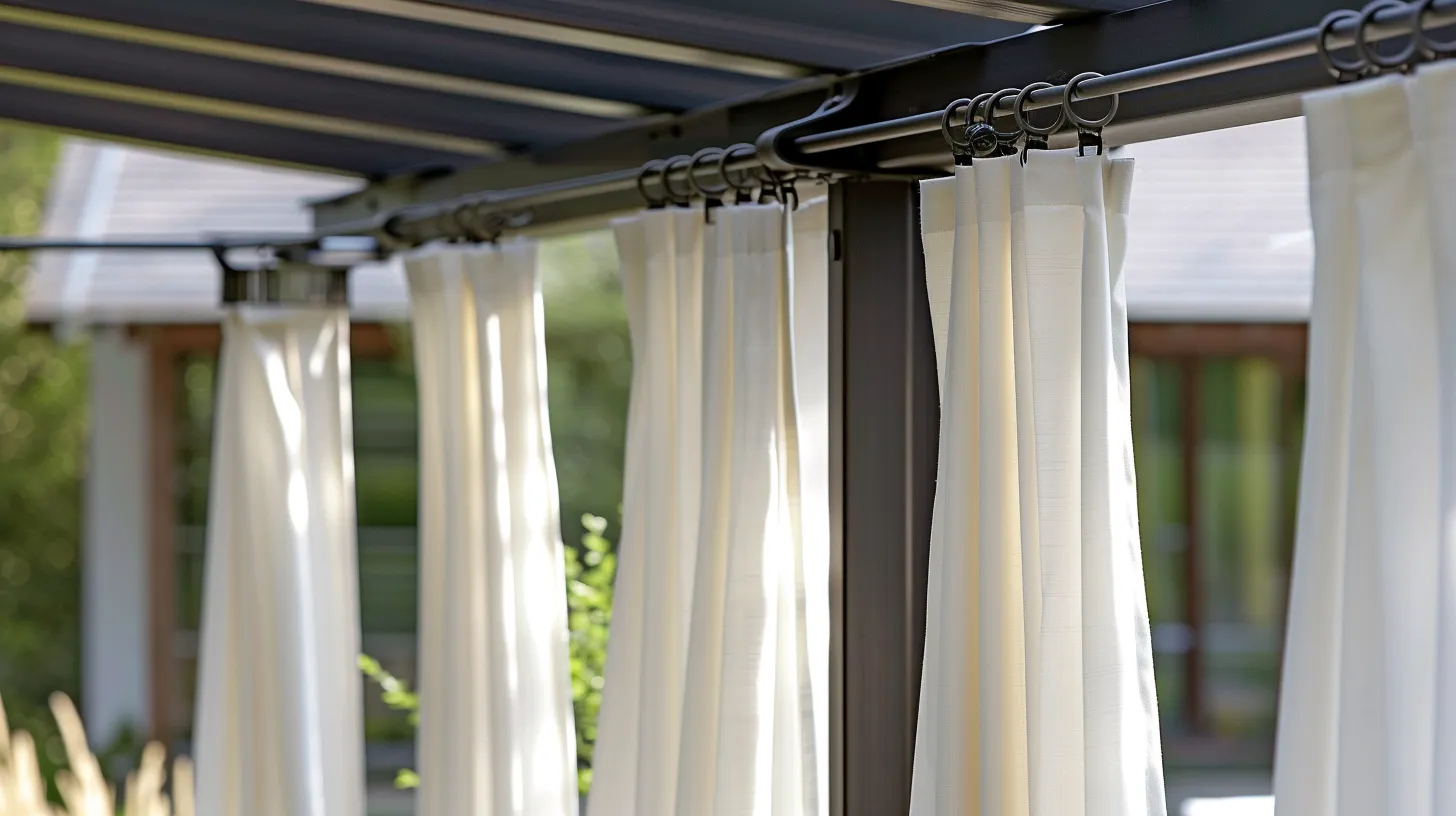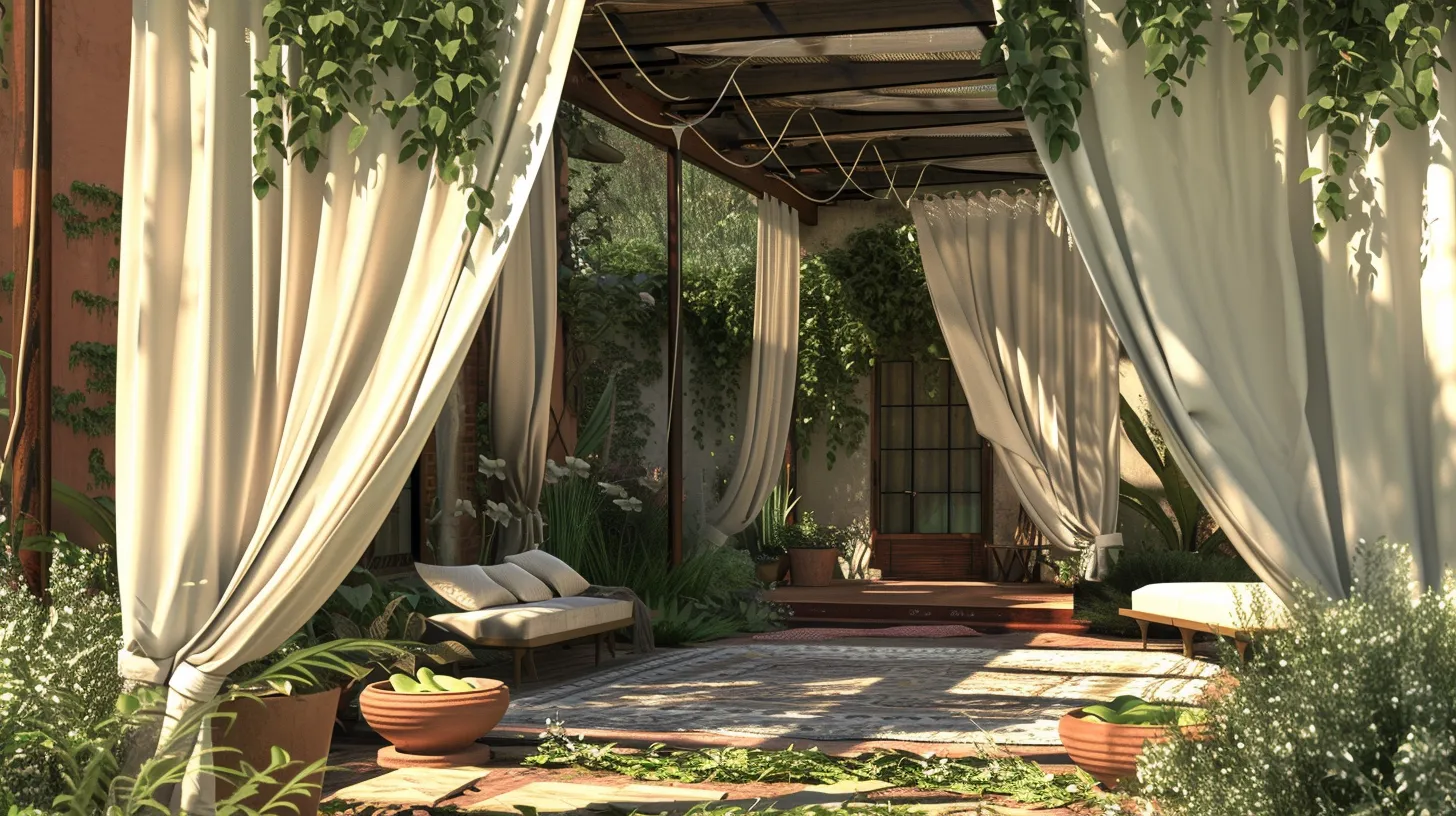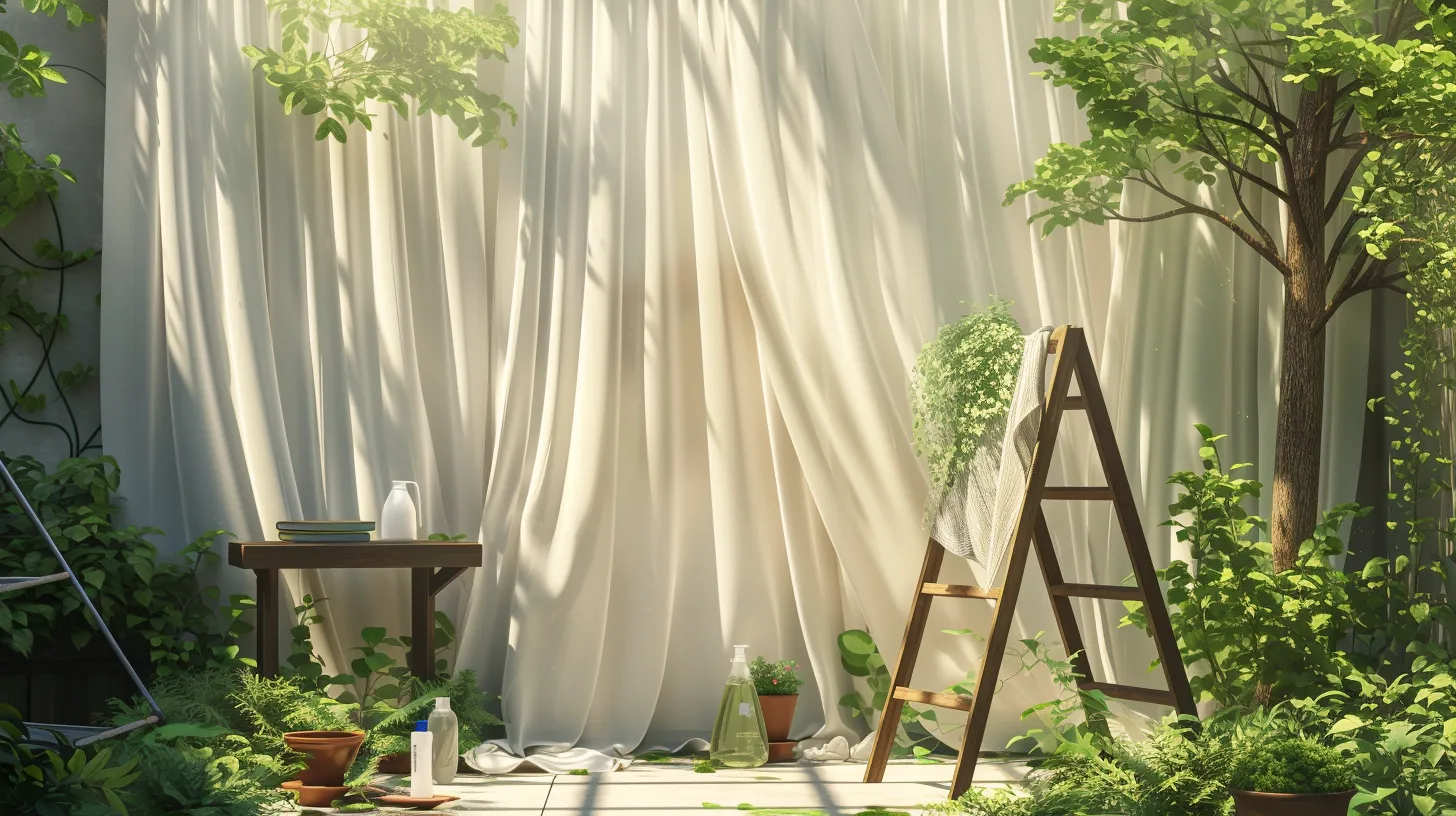The task of hanging outdoor curtains might initially seem straightforward, yet it encompasses a variety of considerations that extend beyond merely choosing a fabric that complements your outdoor décor.
Preparing for installation involves understanding the specific environmental conditions your outdoor space is subject to, which in turn influences the selection of hardware that will not only support the weight of the curtains but also withstand the elements.
From traditional curtain rods to more innovative tension rods and alternative hanging methods, each option offers its own set of advantages and challenges.
Furthermore, maintaining the aesthetic appeal and durability of your outdoor curtains requires adherence to maintenance tips tailored to the materials and hardware chosen.
As we explore the nuances of installing outdoor curtains, it becomes evident that achieving the perfect balance between functionality and style necessitates a deeper insight into the various aspects of this process.
Preparing for Installation
Before commencing the installation of outdoor curtains, it is imperative to thoroughly assess your outdoor space to identify the most appropriate method for hanging, ensuring both durability and aesthetic appeal. The selection of a suitable mounting surface is crucial; it must be robust enough to support the weight of the curtains and withstand the rigors of outdoor conditions. This preliminary step is foundational, dictating the subsequent choice of tools and mounting hardware necessary for the installation process.
Gathering the essential tools and hardware is the next critical phase. This includes, but is not limited to, mount brackets, curtain rods, ceiling tracks, tensioned wire rope, or ropes, each catering to different hanging methods and aesthetic outcomes. The choice of hardware should be influenced by local weather conditions to guarantee resilience against elements such as wind, rain, and sun exposure.
Moreover, accurate measurements of the outdoor space are indispensable for determining the optimal length and placement of the curtains. This ensures a harmonious integration of the curtains into the outdoor setting. Drilling pilot holes for the mounting hardware can further streamline the installation process, preventing damage to the mounting surface and ensuring a secure fit for the curtain rods.
Choosing Your Hardware

Selecting the appropriate hardware for hanging outdoor curtains is a critical step in ensuring the longevity and aesthetic integrity of your outdoor space. The right hardware not only supports the weight of the curtains but also complements the overall look of your outdoor area. Here's a quick guide to help you choose the right hardware:
When opting for tension rods or an outdoor curtain rod, consider the aesthetics and how they blend with your outdoor decor. For a more invisible look, a ceiling track can be an excellent choice, though it requires a stable, solid ceiling for installation. For a rustic or industrial vibe, using eye hooks and wall anchors to hang curtains on wire rope or sisal rope could provide a unique touch to your outdoor space.
Installing Curtain Rods

Having chosen the right hardware for your outdoor curtains, the next step involves the installation of curtain rods to ensure a secure and aesthetically pleasing setup. When utilizing mount brackets and a curtain rod, begin by measuring approximately 2 inches down from the ceiling on your mounting surface. Securely mount the brackets using the provided hardware, ensuring stability for your curtain rods. If suitable posts for mounting are absent, consider installing curtain rods using ceiling-mount curtain rod brackets. It's crucial that these brackets are firmly attached to the surface to prevent any sagging or instability.
For solid ceiling surfaces, a ceiling track may be the most efficient method. Cut the track to your desired length, and install it directly into the ceiling with the included hardware. This approach guarantees a smooth glide for your curtains and a clean, streamlined appearance.
Alternatively, for a more flexible setup between posts, tensioned wire rope can be utilized. Install eye bolts securely on each post, and attach the wire rope using wire rope clamps. This method not only supports your curtain rods but also adds an element of industrial chic to your outdoor space.
Alternative Hanging Methods

Exploring alternative hanging methods offers creative and practical solutions for installing outdoor curtains without traditional rods. Traditional methods, while effective, may not suit every outdoor space's aesthetic or functional needs. By considering various innovative alternatives, one can achieve the desired ambiance and utility with a touch of personal flair.
Below are three distinct methods for hanging outdoor curtains, each offering its unique advantages:
- Tensioned Wire Rope :
- Utilize tensioned wire rope strung between posts or structures as a sturdy and minimalist alternative. This method not only supports the weight of heavier curtains but also adds a modern industrial look to your outdoor space.
- Ceiling Curtain Tracks :
- Installing a ceiling track system allows for seamless curtain movement. Ideal for covered patios or decks, this method facilitates easy opening and closing of curtains, providing flexibility in controlling shade and privacy. Ceiling tracks blend in with the architecture, maintaining a clean and unobtrusive appearance.
- Ropes as Curtain Rods :
- For a rustic and charming approach, consider using thick ropes to hang your curtains. This method introduces a nautical or bohemian vibe, perfect for creating a relaxed and inviting outdoor retreat. Ropes can be easily tied to sturdy points, offering a simple yet visually appealing hanging solution.
Each alternative offers a unique way to enhance outdoor living spaces, catering to varied tastes and functional requirements.
Maintenance Tips

To ensure the durability and aesthetic appeal of outdoor curtains, regular maintenance is essential. Outdoor living spaces become more inviting and comfortable with the addition of curtains, but without proper care, their beauty can quickly diminish. Regular cleaning is paramount to prevent dirt buildup that can mar appearances. This task also helps in identifying any wear or damage early on, enabling timely repairs or replacements.
Another vital maintenance tip involves taking proactive measures against harsh weather conditions. Storing outdoor curtains during winter or extreme weather can significantly prolong their lifespan, ensuring they remain a staple of your outdoor living area for years to come. Additionally, inspecting the mounting hardware and connections periodically is crucial. This ensures that the curtains remain securely hung, even in challenging conditions, and helps circumvent the need for curtains without drilling, which may be less stable.
Following care instructions tailored to the specific type of outdoor curtains you own is also essential. Each material has unique needs, and adhering to these guidelines can prevent damage and extend the fabric's life.










